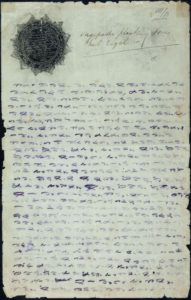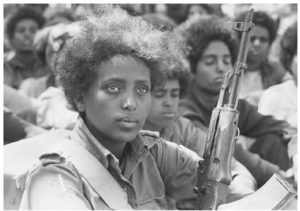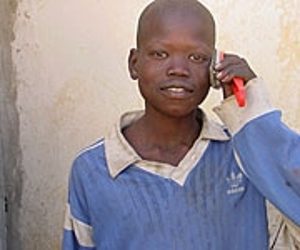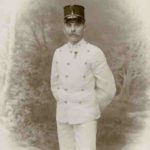Greece Under Continuous Siege: Syriza’s Disastrous Political Stance
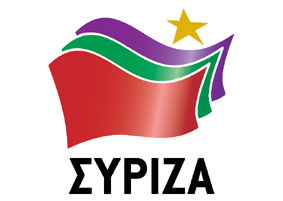 It’s been seven years since the outbreak of the Greek debt crisis, yet Greece — the country that gave birth to democracy — is still stuck in a vicious cycle of debt, austerity and high unemployment. Three consecutive bailout programs have deprived the nation of its fiscal sovereignty, transferred many of its publicly owned assets and resources into private hands (virtually all of foreign origin), produced the collapse of the public health care system, slashed wages, salaries and pensions by as much as 50 percent, and led to a massive exodus of its skilled and educated labor force. As for democracy, it has been seriously constrained since the moment the first bailout went into effect, back in May 2010, as all governments that have come to power have pledged allegiance to the international actors and agencies behind the bailout plans — the European Commission, the European Central Bank and the International Monetary Fund (IMF) — and follow closely and obediently their commands, irrespective of the needs and wishes of the Greek people.
It’s been seven years since the outbreak of the Greek debt crisis, yet Greece — the country that gave birth to democracy — is still stuck in a vicious cycle of debt, austerity and high unemployment. Three consecutive bailout programs have deprived the nation of its fiscal sovereignty, transferred many of its publicly owned assets and resources into private hands (virtually all of foreign origin), produced the collapse of the public health care system, slashed wages, salaries and pensions by as much as 50 percent, and led to a massive exodus of its skilled and educated labor force. As for democracy, it has been seriously constrained since the moment the first bailout went into effect, back in May 2010, as all governments that have come to power have pledged allegiance to the international actors and agencies behind the bailout plans — the European Commission, the European Central Bank and the International Monetary Fund (IMF) — and follow closely and obediently their commands, irrespective of the needs and wishes of the Greek people.
Unsurprisingly, this includes the so-called Coalition of the Radical Left (Syriza), an opportunistic political party with a great knack for old-style cronyism and little experience in managing national affairs. Syriza has been in power for two nightmarish years now, co-governing with the extreme nationalist and xenophobic political party, The Independent Greeks (ANEL).
In the course of the last two years, Syriza, under the leadership of its populist leader Alexis Tsipras, reneged on its campaign promises to voters (ending bailouts, ending austerity and creating public work programs to reduce unemployment), and converted itself into a counterfeit copy of a social democratic party. Since the internal split with the far-left segment, Tsipras has made big-time overtures to European socialists and has attained an observer status in meetings of EU socialist leaders. In this way, Syriza has sought to fill the gap after the collapse of the Panhellenic Socialist Movement (PASOK) while signing a third bailout agreement and committing to execute international creditors’ plans for the sell-out of the country and its conversion into a neoliberal paradise for multinationals and big business interests, analogous to what took place in Latvia.
It’s true that Syriza faced incredible pressure from far stronger adversaries once it was elected, especially given the fact that the Greek state was financially bankrupt. However, the party did not need to pursue the course that it opted to follow — namely, betraying the popular mandate and converting itself into a mainstream political party in hopes of remaining in power for as long as possible. The moment Syriza’s leadership realized that it was incapable of resisting the pressures of the international creditors (the EU and IMF), it should have made a direct appeal to the Greek people by explaining the nature of the situation and the anti-democratic proclivities of the euro masters. It could have then stepped down, causing a European crisis, and turned to organizing grassroots resistance and distributive justice from the ground up. But this was never in the works: Syriza’s leadership had paid allegiance to the euro masters and the domestic corporate/financial elite even before it won the election of January 2015.
The reason why Greek governments have opted for all these years to become servants of the EU/IMF duo is quite simple: They are part of the capitalist universe and inextricably linked to the economic project of the European Union. As such, they believe there is no alternative for bankrupt Greece to bailout programs, and subsequently, to ruthless fiscal readjustment along the austerity route, coupled with a massive privatization undertaking and the end of the social state. This sad state of affairs applies even more forcefully to the current Syriza-ANEL government, which is now involved in some very awkward discussions over the completion for the assessment of the new bailout agreement. The IMF has yet to commit itself to this agreement, as it has a rather different perspective from that held by the European fiscal authorities both over the sustainability of debt and the depth of the reforms under way.
Specifically, the IMF finds the current levels of Greek public debt to be simply unsustainable (it stands at 180 percent of GDP and over 90 percent of long-term liabilities are held by public creditors). The IMF has therefore called for a sizeable debt write-off and also pushed for more reforms on all major sectors of the economy (banks, energy, labor market). In fact, the IMF wants the Greek government to commit itself via legislation to measures beyond 2018 — in other words, beyond the expiration of the new bailout agreement. The IMF contends that Greece’s debt levels will explode to much higher levels in the years (and even decades) ahead, and that the reforms proposed by the EU authorities are not specific enough, while their debt sustainability projections are ill-defined.
Read more
De mysterieuze dood van een priestervorst

De 2e man van rechts is Adranoes Lohij, de oppasser ofwel dardanel van overste Veltman, staand tussen een aantal Atjehse teukoe’s. Op zijn borst de Militaire Willems-Orde en de bronzen medaille voor Menslievend Hulpbetoon.
De tentoonstelling ‘De Laatste Batakkoning’ in 2008 in Museum Bronbeek en het daaraan gekoppelde boek gaven een helder beeld wat er voorafging aan de dood van Si Singamangaraja. Het boek, grotendeels samengesteld uit onderzoek van Harm Stevens, is voorzien van vele originele documenten die de lezer meeneemt naar een roerige tijd. Een periode waarin de laatste verzetshaarden worden uitgeschakeld en grote delen van het archipel worden onderworpen aan het koloniaal gezag.
Over de momenten van het leven van de Batakkoning bestaan verschillende lezingen. Met het ontsluiten van een oude foto, met daarop een inheemse ex-militair met onderschrift ‘Oppasser van overste Veltman’ kwamen er nieuwe feiten aan het licht.
De twaalfde Si Singamangaraja
Ompoe Pulo Batu was de twaalfde Si Singamangaraja ofwel Leeuwenvorst in erfopvolging en gold voor zijn volk als heilige. Door een sluier van mystiek die om hem heen hing en zijn hiërarchische positie in de lijn van de offerpriesters, werd hij door de westerse wereld aangeduid als de priestervorst. De in 1849 geboren priestervorst had zich net als de twee voorgaande Si Singamangaraja’s gevestigd in Bakara, gelegen ten zuidwesten van het Tobameer op Noord-Sumatra. De Bataks, gevestigd rond het Tobameer, leefden veelal autonoom en vormden midden negentiende eeuw nog niet een volk. Maar door het opdringen van het Nederlands-gouvernement en de steeds groter wordende invloed van de zending, onder aanvoering van veelal Duitse zendelingen in de laatste kwart van de negentiende eeuw, kregen de Bataks een gemeenschappelijke vijand. Dit leidde in 1883 tot een opstand onder ruim 9000 Toba-Bataks gericht tegen de westerse indringers. Door het geweld ging alles wat westers was in rook op, maar ook de bekeerde Batak-kampongs moesten het ontgelden. De schrik zat er goed in bij de Europeanen en zij velen verlieten hals over kop het Batak-gebied. De priestervorst werd gezien als leider van deze opstand en het Nederlands-gouvernement gelastte in datzelfde jaar het Nederlands Indisch Leger met een strafexpeditie tegen de priestervorst. 4 maanden lang woedde er oorlog het Batak-gebied. Nadat het Nederlands Indisch Leger op 12 augustus zijn residentie in Bakara had bereikt, was de priestervorst al met zijn gevolg gevlucht naar Lintong in de hoger gelegen oerwouden ten zuiden van het Tobameer. Bakara werd door het Nederlands Indisch Leger ‘getuchtigd’ of beter gezegd, geheel verwoest. Het zou tot 1904 duren voor er een nieuwe serieuze poging werd ondernomen om het verzet te breken. De tocht van overste Van Daalen door de Gajo, Alas en Bataklanden, maakte aan vele illusies van het verzet in de binnenlanden van Noord-Sumatra snel een eind. Met een golf van geweld trokken tweehonderd marechaussees ruim vijf maanden lang door de oerwouden van Noord-Sumatra. De marechaussees kwamen ook in het gebied van priestervorst, echter was hij net als in 1883 niet vindbaar. Met de expeditie van Hendrikus Colijn, de latere minister-president van Nederland, werd eind 1904 een nieuwe poging ondernomen. Ook toen werd er geen contact gemaakt met de priestervorst.
Brief van Si Singa Mangaradja, die regeert over de Bataks, gericht aan de heer ‘overste generaal, leider van de oorlog van de kompenie’.
‘De brief is aan u gericht omdat u oorlog voert in het land van de Bataks en mijn onderdanen gevangen heeft genomen. Maar ik heb ook woorden ontvangen van de grote heer van Medan en de resident van Tampanoeli (Batak gebied) en van de controleur, zij zeggen geen oorlog te zullen voeren tegen mij en degene waar ik over regeer.
Heb alle betrokkenen een brief gegeven dat er vrede is en ik een oorlog zal voeren tegen de kompenie. Ik zeg nu tegen de ‘overste generaal’, keert gij terug, en ga niet met mij en degene waar ik over regeer in oorlog. Het is toch niet geoorloofd om mij en mijn onderdanen lastig te vallen. Keer terug, anders overtreed u de regeles van de woorden van vrede en afspraak, die gemaakt zijn met de resident van Medan.
En als er klachten zijn over mijn onderdanen, richt u tot mij. Mijn onderdanen willen geen moeilijkheden.
Keer terug, anders overtreed u de regeles van de woorden van vrede en afspraak, die gemaakt zijn met de resident van Medan.
Zo zij het.
3 november 1904′
In de daaropvolgende jaren werden diverse kleine expedities ondernomen om de priestervorst op te sporen, echter zonder resultaat. Op 1 maart 1907 deed assistent-resident der Bataklanden een oproep aan het gouvernement. De onrust, die de ongrijpbare priestervorst met zich mee bracht, moest snel ten einde worden gebracht. Zijn oproep luidde letterlijk: “De buitengewone toestand eischt daarom buitengewone maatregelen: tydelijke verwydering van alle ongewenste elementen en de beschikbaarstelling van eenige flinke marechaussee onder een beproefde aanvoerder b.v. de kapitein Christoffel, aan wien zooveel mogelyk de vrye hand moet worden gelaten…..”.
Read more
Michael Weldeghiorghis Tedla ~ The Eritrean Liberation Front: Social And Political Factors Shaping Its Emergence, Development And Demise, 1960-1981
Introduction
In the second half of the twentieth century, Eritrea was an arena of uninterrupted armed conflict that went on for about three decades. The conflict was basically rooted in history and geography. But it was also aggravated by outside intervention for many years. Ethiopia being supported first by the US, Israel, and latter on by the USSR, and the Eritrean nationalists by socialist oriented Middle Eastern and Asian countries and organizations turned Eritrea into a proxy battle field between opposing forces during the Cold War era.
The protracted Eritrean war of independence started in 1961 under the auspices of the Eritrean Liberation Front (ELF). The ELF (1960-1981) was the first, and largely Muslim-based, armed resistance movement that emerged to contest Ethiopian rule over Eritrea. Formed in 1960, the ELF carried out political and military activities for the subsequent twenty years in an attempt to gain independence. This armed resistance movement was, however, unable to accomplish its stated goals of achieving independence. Rather, the task of achieving de facto independence was realized by its offspring organization in 1991. This study is, therefore, an attempt to reconstruct the history of a socio-political movement that has been important in the recent history of Eritrea: the Eritrean Liberation Front. In the following sections an attempt is made to outline the fundamental research problem and the motivation for my interest in undertaking the intended study, research questions, scope of the study, theoretical framework, methodology, relevance of the study, and organization of the thesis.
Problem Statement and Rationale
In 1950, the UN passed a resolution that federated Eritrea with Ethiopia, without any form of plebiscite. Within few years, Ethiopia dismantled the pillars of the federation that guaranteed Eritrea’s limited autonomy one by one without hesitation. Throughout the federal period, Eritreans protested against Ethiopia’s violations of the Eritrean autonomy. As it became quite difficult to organize and agitate inside Eritrea, the task of organizing a movement to promote the Eritrean cause fell on the Diaspora. Frustrated with the system, a new breed of Eritrean nationalists founded the underground Eritrean Liberation Movement (ELM)[i] in Port Sudan in 1958. The ELM sought to terminate Ethiopian rule through a coup d’état. But before the ELM could attempt a coup, the war for independence was launched in 1961 under the auspices of the ELF.[ii] After that the country lapsed into a cycle of political disorder, violent conflict and human suffering in the three decades that followed.
The founders of the ELF were Eritrean political exiles and students in Cairo, Egypt, who drew inspiration from the Algerian revolution.[iii] The initial ELF leaders, who were living abroad, came mainly from Muslim backgrounds and this had a profound impact on the membership and mobilization of the ELF. Consequently, during the early years of the first decade of its history, the movement favoured Muslims over Christians.[iv]
In the 1960s, the movement nevertheless grew steadily as it started to attract support from diverse segments of the population and from the Diasporas. The fighters (also called Tegadelti in Tigrinya, one of the most widely spoken languages in Eritrea) were individuals who came from diverse economic, social, educational, gender, and age backgrounds and came to be marked by their devotion to the success of the struggle. Some of the early fighters received training in Syria, China, Cuba, and Iraq; whilst the rest were trained in the liberated areas. Within the next ten years, the ELF became a serious threat to the Ethiopian rule in Eritrea. The impact of its existence was felt beyond the boundaries of Ethiopia, especially when Ethiopian planes were subjected to subversive activities. In 1970, there was a major breakaway from the initial movement. Three splinter groups emerged and latter coalesced to form the Eritrean People’s Liberation Front (EPLF), which became a strong rival to the parent Front. The ELF remained a viable organization for the next ten years, but in the 1970s a series of armed clashes between the two dominant movements occurred. These clashes were typically exemplified by a struggle for dominance. Finally, in 1982, the EPLF superseded the ELF and other smaller groups as the most effective armed resistance to the Ethiopian forces, and defeated the ELF in the process. The ELF fighters fled to Sudan, and many went on to Europe and North America, while some members opted to return to Eritrea and join the rival nationalist movement, the EPLF.
In May 1991, the EPLF took control of the whole country from Ethiopia and Eritrea achieved its de jure independence in 1993 after holding a UN observed referendum, in which 99.8 percent of Eritreans voted for sovereignty. The EPLF transformed itself into the People’s Front for Democracy and Justice (PFDJ) in 1994 and has been leading the country since its independence.
The ELF, emerging years before its rival the EPLF, and having been in a position of prominence in military terms with regard to the latter, nevertheless was superseded and destroyed in a relatively short period of time. This calls for investigation into the reasons why one movement, from the outside looking stronger, so spectacularly failed not only to achieve its aims but even to maintain itself as an organization, while a seemingly weaker front, the EPLF, not only managed to outflank and supersede its rival but also went on to occupy the whole of Eritrea. The Eritrean example, in this manner, offers a unique comparative example of two movements with different strategies and with very different fortunes. Although it is beyond the scope of the study to address the ELF from a comparative dimension, it is important to at least note that the Eritrean example may hold general lessons on the variables that affect the viability and strength of national-revolutionary movements.
In my previous career as a junior researcher and archivist at the Research and Documentation Centre (RDC), the acting national archive of Eritrea, from 2004 to 2012, I was confronted with a large amount of archival materials concerning the movement in question. Despite the availability of such bulky serviceable source materials, the history of the Eritrean struggle for independence remained by and large incomplete and undeveloped.[v]
This absence of well researched publications and analysis poses a challenge in developing a broader understanding of the dynamics of the Eritrean politics prior to the independence of the country. This experience instilled in me the desire to study the nature and development of the ELF using the idea of writing history from the stand point of those former ELF fighters. In this study,special attention has been given to its origin, development, and demise of the movement, and the how and why questions have also been investigated thoroughly.
Download book (PDF): https://openaccess.leidenuniv.nl/bitstream/ASC-075287668-3671-01.pdf?
Notes
[i] Ruth Iyob, The Eritrean Struggle for Independence: Domination, Resistance, Nationalism, 1941-1993 (Cambridge: Cambridge University Press, 1995), 98-101; see also Dan Connel and Tom Killion. Historical Dictionary of Eritrea (2nd ed.) (Lanham, Toronto and Plymouth, UK: The Scarecrow Press, Inc., 2011), Connel and Killion, 218-20.
[ii] Ruth, 103; see also Redie Bereketeab, “Eritrea: The Making of a Nation 1890-1991” (PhD. diss., Uppsala University, 2000), 183-184.
[iii] John Markakis, National and Class Conflict in the Horn of Africa (Cambridge: Cambridge University Press, 1987), 113.
[iv] Redie, 185
[v] Bairu Tafla, “Interdependence through Independence: The Challenges of Eritrean Historiography,” in New Trends in Ethiopian Studies, ed. Harold G. Marcus. (Lawrenceville: Red Sea Press, 1994), 500.
Grace Akello ~ Wartime Children’s Suffering And Quests For Therapy In Northern Uganda
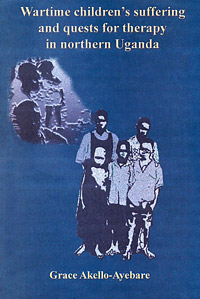 Prologue
Prologue
Ojok: An exemplary case of suffering and quests for well-being by wartime children in Gulu Municipality I will call this child Ojok (not his real name) to ensure anonymity. In 2004 when I met him, Ojok was a fifteen-year-old boy (1989) who was born in Kitgum four years after the beginning of the then twenty-year-old insurgency in northern Uganda. When telling his life history, he related how, whenever he asked his mother who his father was, he provoked anger, tears and fear. His mother, like a substantial number of women in northern Uganda, had been raped by a group of men in the rebel army. When she went to report the case to the state army, instead of being helped she was detained for weeks and subsequently raped frequently by a group of state soldiers. She managed to escape to one of the camps in the neighbouring Gulu district, but was already three-months pregnant with Ojok – a child-of-rape. Statistics are unavailable but it is well-known that as a consequence of any armed conflict, there are a substantial number of children with a similar life history. Ojok serves as an ‘archetypal case’. A substantial number of children such as Ojok were neglected till they died of malnourishment or abandoned in public hospitals and camps in Gulu. Ojok was lucky to survive till his age.
When Ojok was two years old, his mother got married to an ex-combatant with the Lords Resistance Army, who had escaped, and had settled in a camp in Gulu where she lived. In this marital union they had three children, aged 13, 9 and 7 years respectively in 2004. Although they were a relatively stable family, Ojok’s stepfather succumbed to HIV/AIDS when his youngest child was five years old. Before his death he had introduced his family to his patrilineal kin, but made it clear that Ojok did not belong to the family. According to Ojok, they had been living together in good peace with his stepfather’s kin even after his death. However, two years later, he also lost his mother to HIV/AIDS. Being the eldest in the family of four orphans, automatically Ojok assumed the responsibility of caring for his siblings, including providing for food, healthcare needs and where possible educational costs. He had to drop out of school in order to do leja leja (casual farm labour) and other income generating activities to meet all these expenses. One weekend in April 2004, he was summoned by his stepfather’s kin for a meeting. In this meeting he was told that he did not belong to the family and was subsequently ordered to vacate their land together with his siblings. To confirm their determination, the entire kinship group uprooted all the crops Ojok had on his farm and demolished the children’s house. Ojok together with his siblings left for Lacor night commuters’ home where they lived at the time of interviews in July 2004. He still worked at the hospital premises and other neighbouring places, but had a lot of medical complaints.
When Ojok was asked about his experiences in a one month recall he mentioned malaria, cough and diarrhoea. For malaria he bought chloroquine from a grocery shop for 100 Uganda shillings (approximately 0.043 euros), but for cough he and his siblings used mango and guava leaves. The nurse gave him some yellow tablets for diarrhoea. For his siblings, he bought chloroquine when they had malaria.
According to the night commuters’ shelter nurse where Ojok lived together with his family, “he is always taking Panadol for his headache, which never recovers”. Sometimes, the nurse gave him a higher Panadol dosage, say three instead of two tablets, but still he complained of headache. At night, Ojok presented another challenge to the people at the night commuters’ shelter. If he was not tossing around on his mat he was always having violent nightmares. Therefore, the nurse gave him a dose of Valium each evening. However, in the recent past, the nurse complained, “even if Ojok took five Valium tablets, they did not work! The administration was considering giving him oxazepams and perhaps other very strong tranquilizers”. Assessing Ojok holistically, it is clear that underlying his persistent complaints is a web of all sorts of social and psychological issues.
The main objective of this exemplary case is to show the complexity of the effects of armed conflict on children’s lives, including their illness experiences and quests for therapy. The content in Ojok’s story signifies a child facing uncertainty, having relatives dying of HIV/AIDS and the direct effects of the breakdown of social networks leading to complex healthcare issues in wartime. Ojok as I mentioned, is a synecdoche or archetypal case of a substantial number of children living in a situation of armed conflict. And for the armed conflict in northern Uganda which had lasted more than twenty years at the time of this study Ojok’s experiences could only be a tip of the iceberg of the magnitude of problems in conflict and post conflict northern Uganda which are intertwined with health and healthcare issues.
Download book: https://openaccess.leidenuniv.nl/ASC-075287668-2755-01.pdf
ISBN 978-90-5448-095-2 © Grace Akello, 2010 – African Studies Collection, vol. 25
Mirjam de Bruijn ~ ‘The Telephone Has Grown Legs’: Mobile Communication And Social Change In The Margins Of African Society
Inaugural Address – September 2008
My phone at home in the Netherlands never stops ringing nowadays and on the display I often see the Malian, Chadian or Cameroonian country codes. And in the evenings there are always ‘missed calls’ from African numbers too. This was unimaginable when I started doing my PhD research in central Mali in the early 1990s. For the people at home then, I was far away. People’s understanding and experiences of distance are very different today.
At breakfast I often speak Fulfulde to Ahmadou, a herder from central Mali who tells me how he is sitting under the trees next to his cows. The costs of communication have apparently dropped so much that he can afford just to call to greet me, the owner of a part of his herd.
We met in 1990 and became like a brother and sister sharing life in the Fulani cattle camp where his father hosted me and my husband. Ahmadou is his eldest son and married two wives and has today 7 children. After the death of his father in 2006, he became the head of his family and clan.
The telephone has given him the chance to change his life, as was apparent when he asked our family to support his political campaign. We agreed; after all it was the least we could do since he had herded our cows for so many years.
Ahmadou has big plans. He would now like to build a house in the city. In one of our phone conversations, he asked me to bring him a television on my next visit. His last call was to communicate his victory in the political campaign!
For 35 years, the people of Chad have been living in the midst of a civil war and with repressive state machinery. But even in the regions where war and hunger are a daily reality, people now have access to mobile telephony in spite of widespread deep-rooted poverty. Mongo, the country’s fifth largest
city, has had access to mobile telephony since 2005. I worked and lived in 2002/2003 in Mongo and met with Ousmanou who became one of my research assistants.
Ousmanou did some investigation on his own, being a literate, and together we developed a plan for a NGO (Non-Governmental Organisation) to help impoverished children who live in the streets of Mongo. He is married and has four children. The mobile phone helps to continue our exchanges.
Ousmanou regularly sends text messages to keeps me updated of the recent ups and downs of his family and the city. The telephone has also been a good help to raise some funds for this NGO. However during the last upsurge of fighting in Chad (in 2008, and also before in 2006 and 2007), all telephone connections were cut, which led to a high degree of panic amongst our Chadian acquaintances (and us). With no way of contacting the outside world, their
lives were suddenly once again in the hands of the authoritarian regime of President Idriss Deby.
It will be clear that the way information from these ‘remote’ parts of Africa is being transferred to those in the West has changed with these new methods of communication. The growth of mobile telephony in Africa became possible after the liberalization of the telecommunications market and its
escalation has been astonishing. The unexpectedly high access to mobile telephones has risen from 1 in 50 persons at the beginning of the 21st century to 1 in 3 just a few years later in 2008. Even the inhabitants of remote rural areas in Africa are being introduced to the world of wireless telephony.
Ahmadou and Ousmanou live in marginal regions of the world where modern technology is sparse and where it is not easy to survive due to the difficult natural and economic circumstances of these harsh regions and their political instability. Government interest and investment in marginal regions are usually minimal as they are considered to be areas of little economic or social interest. But Ahmadou and Ousmanou do not see themselves as being marginalized at all. For them, these regions are part of their identity and their use of the mobile phone makes it clear that these marginal areas are not isolated at all, in spite of the absence of good infrastructure. On the contrary, these regions’ relations stretch as far as Europe.The margins cannot be demarcated geographically; they are social margins.
I am interested in the question if and how mobile telephony, a new communication technology, will change the social, political and economic dynamics in the social margins of our world in the coming years? Does it reflect a revolution in communication and development, or will nothing ultimately change at the end of the day?
Ahmadou and Ousmanou and their families in Mali and Chad have become part of these changes. I have been following them and their families since 1990 and 2002 respectively and will continue doing so. And I have recently started a project in the Grassfields area in Cameroon. In the coming years I will be following families in Mali, Chad and Cameroon and try to understand the new dynamics in their societies also through their eyes.
Here, therefore, I am not presenting a completed story but an initial exploration of possible changes in the social margins of Africa. To be able to look into change I will introduce my understanding of the social margins, elaborate on the concept of communication ecology and social relations in the margins. And then I will explore possible social changes that are the result of the new communications technology. I will thus introduce a current and important field of study within African Studies, where interdisciplinary collaboration can make a contribution to the study of mobility and migration, of poverty and of social conflict.
Download Text (PDF): https://openaccess.leidenuniv.nl/ASC-075287668-2048-01.pdf?
Margot Leegwater ~ Sharing Scarcity: Land Access And Social Relations In Southeast Rwanda
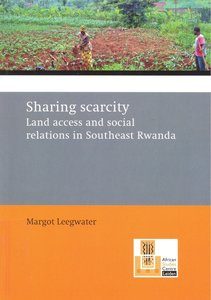 Introduction
Introduction
‘If there is ever violence again in Rwanda, it will be because of land’. This is what a Rwandan friend told me in February 2011, just a few weeks after I returned home from my last period of fieldwork in Rwanda. I nodded more or less intuitively in response because this was in line with what other Rwandans had told me, and some had even said ‘when’ instead of ‘if’; it was only later that I would fully grasp the seriousness of his remark. It should be read in the context of Rwanda’s post-independent history in which ethnic violence dominated, leading to a civil war (1990-1994) and culminating in the 1994 genocide that targeted the Tutsi population.
With still about 90% of the population engaged in subsistence farming, access to land is of crucial importance in present-day Rwanda (Ansoms 2009b: 299). Land remains a scarce resource in a country that has the highest population density in Africa and where many people were displaced as a result of massive violence in the past. It is estimated that the average Rwandan cultivates 0.75 ha (Huggins 2013: 1) but most peasants have only about 0.5 ha and this is spread across several small plots (Huggins 2014a: 2).[i] Because of its importance and its increasing scarcity, land has become a growing cause of conflict in recent years (Musahara & Huggins 2005; Ansoms & Claessens 2011: 4). During my first fieldwork period in 2008, respondents tended to deny or downplay conflicts over land. Although they more or less confirmed that such conflicts did exist, they rarely admitted that they had been party to any conflict themselves and always stressed that the local authorities had been able to solve these conflicts. However, during my last fieldwork period in November and December 2010, it seemed that land disputes were omnipresent. It was at this time that land registration, which was introduced in the 2005 (and later 2013) Land Law, was being carried out in the research area and my research assistant and I were often confronted with land disputes. We witnessed them when watching the demarcation procedure during land registration. They were mentioned, often without any probing on our part, by many of the people we encountered: villagers who were queuing to meet the village authority, the authorities themselves and numerous other respondents. Sometimes people even called on us for advice about solving their problems. Most conflicts that came before local mediators also concerned land and, indirectly, these conflicts often had to do with land sharing between the Hutu population and returned Tutsi refugees that took place in 1996 and 1997.
The tensions and conflicts we came across were an indication of the state of social relations among Rwanda’s rural population, which were already strained following the 1994 genocide and the ethnically-related violence that occurred around the time of Rwanda’s independence.[ii] In addition, recent, but also older, land-tenure policies like the above-mentioned land registration and land sharing seem to have had a negative impact on social relations between Rwanda’s various ethnic and social groups. The central question in this thesis is: How do government policies concerning access to land and land tenure in rural post-conflict Rwanda influence local community relations (including ethnicity) and land conflicts?
The reason why I wanted to research land issues was because I am ultimately interested in Rwanda’s current social relations and the role of ethnicity in these relationships. Land access is thus used as a lens through which to look at present-day Rwandan society and its current social tensions.
This introduction is divided into four parts. The first discusses Rwanda’s recent history and examines the 1994 genocide that targeted the Tutsi population, the issue of land scarcity and conflict and genocide-related violence. The second section takes us to present-day Rwanda and considers the nature of the Rwandan government, its strong social-engineering policies and the role ethnicity plays in social relations and politics. The third part of the chapter presents a brief introduction to the research area, the research questions and some general remarks about the research itself. It does not, however, delve into the research methods used as these are described in Chapter 2. The last section discusses the way land access is related to social relations and authority in general and applies this to the Rwandan context, before finishing with an outline of the chapters.
Download book: https://openaccess.leidenuniv.nl/ASC-075287668-3694-01.pdf?
Notes
[i] According to Huggins, statistics on the average size of land holdings vary slightly and the average size decreased by 25% between 1990 and 2000. In a 2012 report used by Huggins (2013: 1), the Ministry of Agriculture and Animal Resources estimated that the average size was 0.76 ha, which was higher than previous estimates.
[ii] This ethnic violence is described in more detail in Chapter 3.
ISBN: 978-90-5448-145-4 -© Margot Leegwater, 2015


